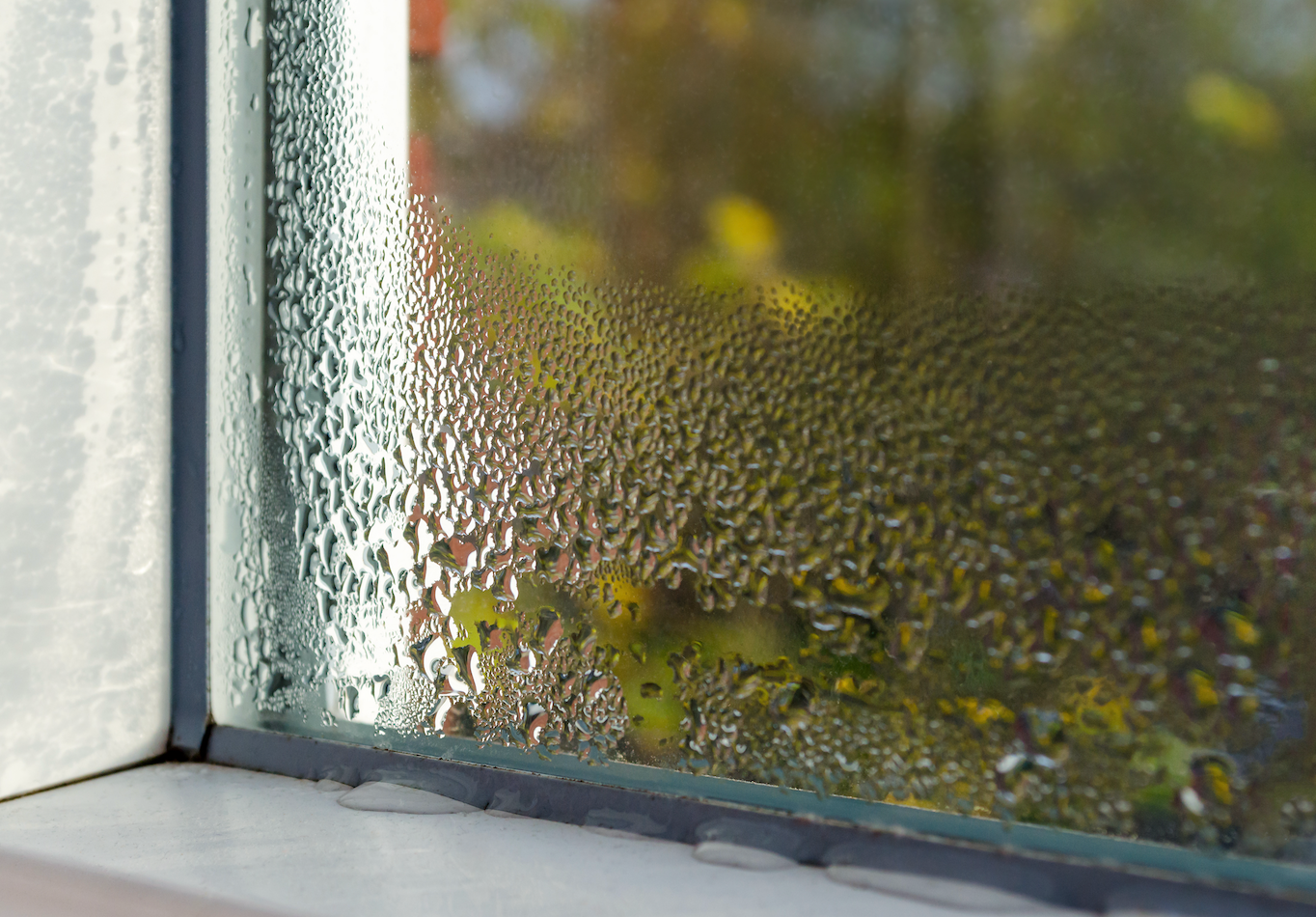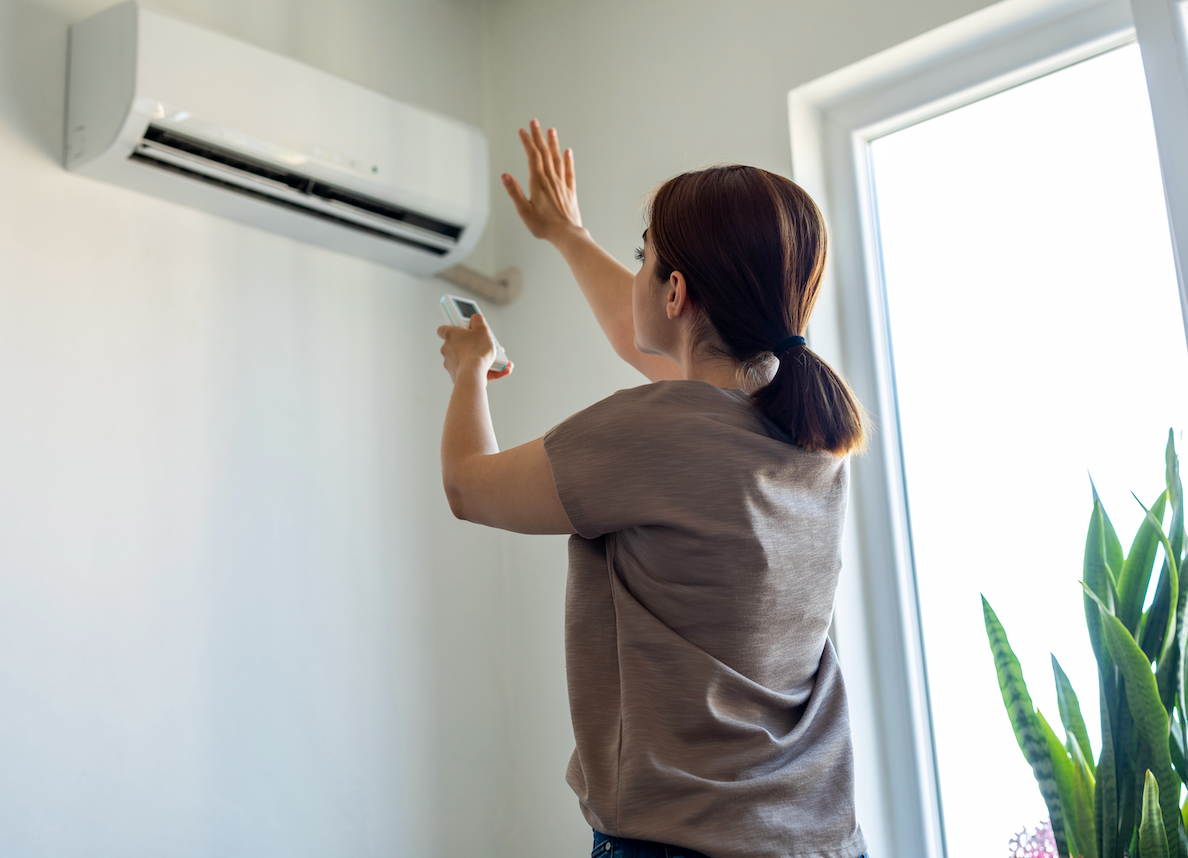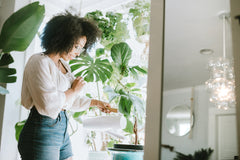Let’s talk about location! Location matters a great deal when it comes to the overall health of your plants, so it’s vital to give as much thought to placing your plants as you do to caring for them.
One of the most common house plant issues, besides over or under-watering, is sad-looking plants that never seem to be happy no matter what you try. Chances are, it could just be the wrong placement in your house that’s causing your recurring issues and holding your varieties back from truly thriving.

Plants can’t get up and put on a sweatshirt if they’re too cold, close the blinds if the sun is too intense, or turn on a fan when things get hot. They’re rooted where you place them, so you must choose their location carefully. House plants will always prefer the native conditions that they grow in, and while you most likely don’t live in a greenhouse to replicate their native climates, you can still provide for your plants by making subtle changes here and there until you find what works.
Continue reading to learn more about factors that influence different locations around your home, how to tell if the location is right or wrong and how to scout the ideal spot for your plants!
Location Factors to Consider
Humidity
Humidity is the concentration of water vapor dissolved in the air, measured in a percentage. Anything under 20% is considered dry, around 50% is the golden zone where the air feels comfortable, and above 60-70% is considered high humidity, where the air may feel wet or heavy and thick.
High Humidity Plants
Several popular house plants naturally grow in rainforests or tropical climates with high humidity levels and will prefer the same conditions in your home. Plants with high humidity needs are Dieffenbachia, Bromeliads, Fiddle Leaf Figs, Ferns, Calatheas, and Ficus Plants. These plants will need natural humidity, a humidifier, daily misting, or a pan of water nearby to be happy. When plants like these don’t get enough humidity, expect to see brown and dry-looking leaves.

Medium Humidity Plants
Plants that require a medium level of humidity do well in humid areas but won’t suffer greatly if the air isn’t very humid. Spider Plants are a great example of varieties that do well with higher humidity, but it’s not a must. Occasionally misting your plants (once per week or less) will be enough to keep them in the medium humidity range.
Low Humidity Plants
Low humidity plants don't require a high level of moisture in the air, and misting is normally optional or not needed most of the year. However, heating systems and cold temperatures can dry out the air and drive the humidity down. So, in the winter, give plants like Pothos, Jade, and Pancake Plants an occasional misting to avoid brown, crispy leaf tips, until temperatures warm up and you turn off the heat.
Zero Humidity Plants
Zero humidity plants are your succulents and desert plants that dislike humidity - too much is actually harmful to them! High humidity, or misting plants that don’t require it, can result in mildew and fungal issues. If you live in a high humidity environment, make sure there’s adequate drainage and air circulation around the plants.
You normally won’t see humidity conditions vary widely within your home, but be mindful of particularly high humidity areas like bathrooms or extra dry areas like under air vents. If you wish to measure the exact humidity levels you can purchase a humidity sensor (a Hygrometer), or try looking at your local weather forecast to better understand the humidity levels in your location. Humidity levels might fluctuate seasonally, but as long as you’re aware of your plants’ needs, you can place them accordingly.
Light
Light is the driving force behind a plant’s ability to make food and energy and without it, it won’t last long. Make sure when you choose a location that the proper amount of sunlight is available, or that there’s another source of light to supplement with. Each kind of plant will have a preference on the amount and intensity of light they receive per day. A great place to start is researching the individual needs of each plant.

Most house plants will need bright indirect light, direct light, or partial light. When determining which kind of light you have, keep in mind that shades, curtains, and blinds can alter the light if needed. This topic is covered later in this course, so stay tuned to understand the ins and outs of all things light related!
As a quick reference, here’s some popular house plants and the light they prefer:
|
House Plant |
Light Needs |
|
Monstera |
Bright indirect |
|
Philodendron |
Full to bright/filtered |
|
Pothos |
No direct; bright to filtered |
|
Colocasia |
1/2 day sun; partial |
|
Alocasia |
Full-partial |
|
Calatheas |
No direct; filtered medium |
|
Schefflera |
No direct; filtered |
|
Ficus |
Medium light |
|
ZZ |
Bright to low; no direct |
|
Dieffenbachia |
Low |
|
Croton |
No full; bright to filtered |
|
Snake plant |
Bright light to low |
|
Dracaena |
1/2 day sun; no direct light |
Temperature
Temperature may seem unnecessary to think about since most people keep their homes at a nice, comfortable level. However, what’s comfortable for you might be uncomfortable for your house plants. Depending on the plant, it may prefer hotter or cooler conditions and can be quite sensitive to rapid temperature changes.
Consistent temperatures let a plant know what to do and when to do it, much like a calendar, and most plants need a certain average temperature to flower, go dormant, or fruit. Having a fan run during the day or being too close to a bright sunny window or an AC or heating vent can throw off a plant’s internal timing. Not to mention, colder temperatures encourage dry air, decreasing humidity.

Be on the lookout for drafts or places in your home where the temperature may change suddenly, like near a door to the outside or in the kitchen. Sudden changes in temperature confuse plants and may harm them in the long run. Try moving your plants around seasonally as needed, and keep an eye out for any source that might be making them unhappy.
Choosing the Perfect Location
As you can see, many location factors affect your house plants’ overall health. Follow these quick steps and considerations to help you choose the right indoor spot for your varieties:
Know the needs and preferences
You’ll need to know the amount of light, water, temperature, and humidity that’s needed for your plants to thrive. You can find this information on your plant’s product page or in our Resource Center. The more you know about your plant’s preferences, the better!
Observe your home before placing your plants
Some helpful things to note are the way the sun moves through the room, any nearby vents or drafty windows, and anything else that might suddenly change the climate of that area.
For example, placing your citrus tree in the kitchen sounds good in theory, but in reality, your tree is most likely going to suffer there. Between the fridge, stove, and oven, the temperature changes will cause confusion and stress the plant. Instead, choose a location further away from the kitchen to better meet the needs of your tree.
Group similar plants together
If you’re placing multiple plants, sort them by need. For example, group plants that prefer indirect light and high humidity together. This way, it’ll be easier to care for your plants in one ideal location.

Make adjustments as needed
If you notice that something doesn’t seem right with your plant, rule out any other issues like pests, watering, or soil health that might be the real cause before you assume location is to blame. Next, make one adjustment at a time and allow your plant to acclimate.
Give your plants time to acclimate
It’s not uncommon for your plant to become stressed or shocked after being transplanted or moved. Normally, this appears as droopy, dry, or yellow leaves. Even just moving a plant to another room can shock it, especially for sensitive varieties like Crotons and some Ficus Plants. If this happens, don’t worry - keep conditions consistent so your plant can establish itself. Allow around 2 weeks for it to adjust, and keep a lookout for any new growth. Many plants are hardy and will bounce back with time!

All in all, one thing’s for sure when it comes to house plant care: consistency is key. Placing your plants might seem like a guessing game at times, wondering whether they’re happy where they are or need a new location, but remember, plants are strong! Do your best to gauge your plants’ location needs on a regular basis, and do a little extra research when you’re not quite sure. Your plants will thank you in return with vibrant, healthy growth!
Check out the rest of our House Plants 101 guides to learn more and keep your plants healthy! And be sure to shop our full House Plants Collection to discover your next addition!


